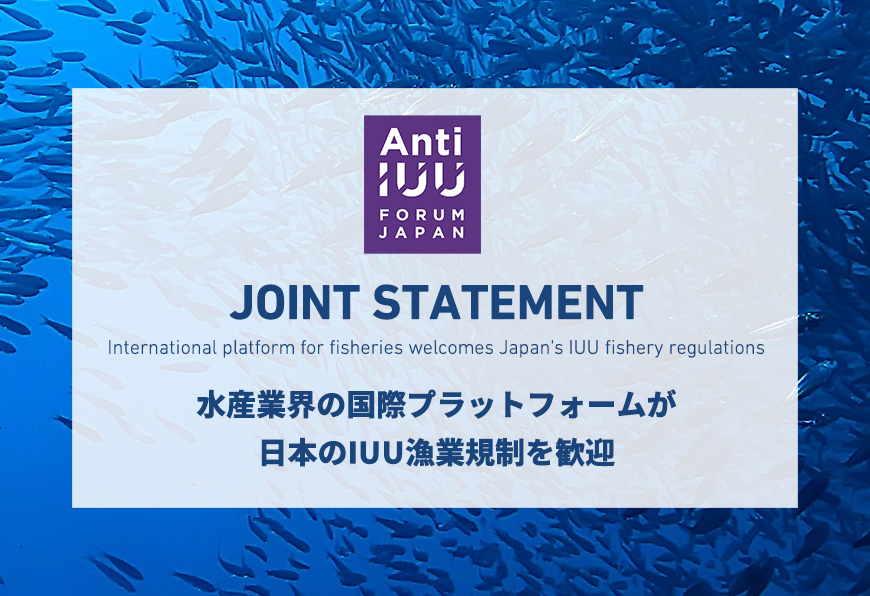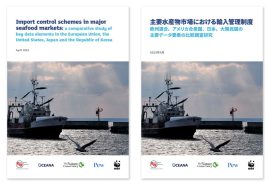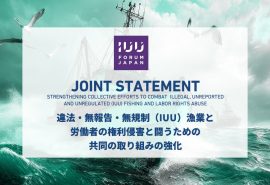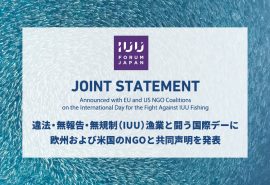
- 15. Apr 2021 |Notice
International platform for fisheries welcomes Japan’s IUU fishery regulations
On April 14, multiple international platforms (SeaBOS, Global Tuna Alliance and International Sustainable Seafood Foundation), to which 100 of the world’s top fisheries companies belong, issued a joint statement welcoming the enactment of “Act on Ensuring the Proper Domestic Distribution and Importation of Specified Aquatic Animals and Plants” adopted in Japan at the end of 2020 with the aim of eradicating the IUU (illegal, unreported, unregulated) fishery.
The IUU fishery exposes legitimate fishers to unfair competition as a threat to sustainable fish stock management. In Japan, the world’s third largest import market for marine products after Europe and the United States, about one-third of imported marine products are at risk of being involved in the IUU fishery.
This joint statement is a manifestation of great interest and expectations from the international fisheries industry for the establishment of IUU fishery legislation in Japan following the EU and the United States. Several global fisheries companies headquartered in Japan are also members of these international platforms, and it is once again clear that IUU fishery measures are an indispensable move for the growth of the Japanese fisheries industry.
Joint Statement: Global seafood coalition applauds Japanese government on actions to eliminate IUU fishing; calls for further collaboration between industry and governments.
https://iuuwatch.jp/wp/wp-content/uploads/2021/04/EN_Final_Coalition-support-for-new-Japan-Fisheries-Law.pdf
The IUU fishery exposes legitimate fishers to unfair competition as a threat to sustainable fish stock management. In Japan, the world’s third largest import market for marine products after Europe and the United States, about one-third of imported marine products are at risk of being involved in the IUU fishery.
This joint statement is a manifestation of great interest and expectations from the international fisheries industry for the establishment of IUU fishery legislation in Japan following the EU and the United States. Several global fisheries companies headquartered in Japan are also members of these international platforms, and it is once again clear that IUU fishery measures are an indispensable move for the growth of the Japanese fisheries industry.
Joint Statement: Global seafood coalition applauds Japanese government on actions to eliminate IUU fishing; calls for further collaboration between industry and governments.
https://iuuwatch.jp/wp/wp-content/uploads/2021/04/EN_Final_Coalition-support-for-new-Japan-Fisheries-Law.pdf




